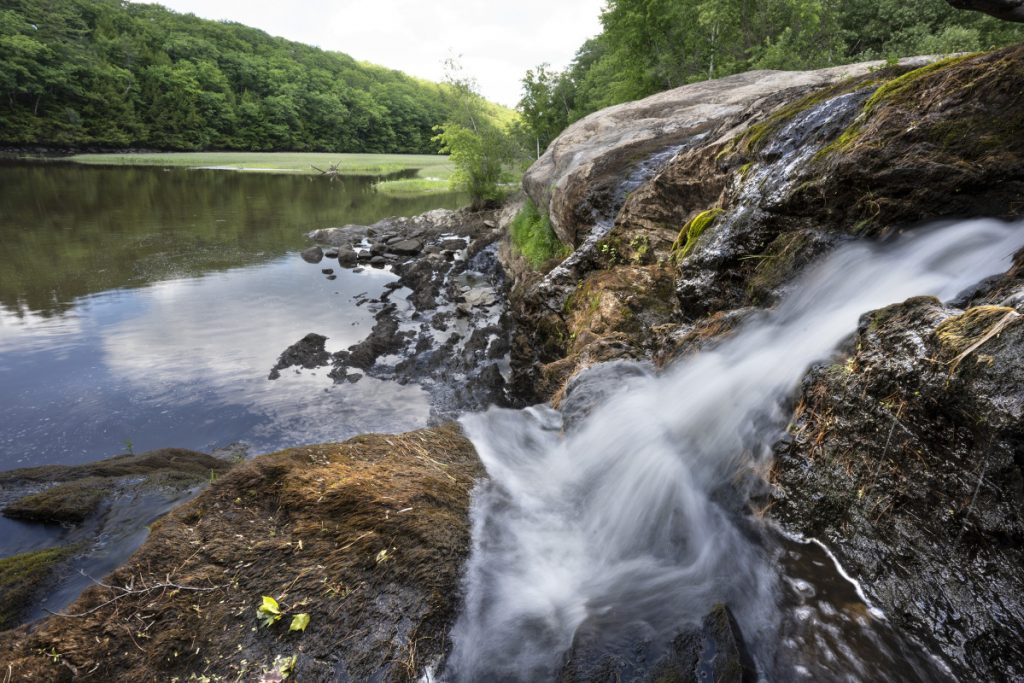When the near-legendary Wayne Davis, chairman of Train Riders Northeast, was seeking support from then-U.S. Senate Majority Leader George Mitchell to bring passenger rail back to Maine, Mitchell — who supported the idea — had one big request: Show public support.
Davis launched a signature-gathering campaign for a statewide referendum, and his all-volunteer teams collected a record number. The Maine Department of Transportation commissioner at the time, Dana Connors, decided the measure required only federal, not state spending, and the Legislature, for the first time, enacted an initiated question into law.
A few years later, the Downeaster began its runs, and the train has become one of Amtrak’s star attractions. The Downeaster now extends to Brunswick and, potentially, to Lewiston, sooner than one might think.
The lesson learned here equally apply to other transportation alternatives. Maine is heavily dependent on fossil fuel burning for heating and electricity, and now trying to diversify — and its automobile and truck dependence invites similar scrutiny.
One of the most exciting off-road possibilities is the Merrymeeting Trail, following an unused state-owned rail line from Gardiner south to Brunswick, connecting to the existing Kennebec River Rail Trail from Augusta to Gardiner. It could provide a continuous recreation corridor of more than 30 miles — a boon to health, tourism and local economies.
This is not a new idea; it’s long been part of Gardiner’s comprehensive plan. Along with the capital-to-Midcoast connection, it would draw people to downtown Richmond and Bowdoinham, two of Maine’s most charming but least visited villages, and show off Merrymeeting Bay, truly one of Maine’s great natural resources.
What is new is the push a new bill, L.D. 1141, sponsored by Rep. Charlotte Warren, D-Hallowell, would provide, and which will be heard by the Legislature’s Transportation Committee this spring. The timing may be good.
After eight years of enforced austerity, the Legislature is considering a variety of infrastructure and public investments; a major bond package is due. What’s in it won’t be determined until June, but the Merrymeeting Trail is a worthy candidate.
Federal funding is often available for rail, transit and pedestrian projects. It’s still the major support for the state’s Downeaster operating costs, and federal funds essentially built the Kennebec Rail Trail.
There’s no similar source of state funding, however, and Maine DOT has such a huge backlog of road and bridge projects that a trail isn’t likely to squeeze into its regular budget. One more big transportation bond is likely, however, and it would be entirely appropriate to require funding trail and rail projects.
Overall, Maine has done much less well in developing a trail network than states in the Midwest, Pacific Northwest, and even the South.
It has one long trail designated entirely for off-road use, the Downeast Sunrise Trail, which runs 87 miles from Ellsworth through Machias to the sea, using the old Calais Branch. But it’s in one of the most lightly populated parts of Maine, and has relatively few users.
The Merrymeeting Trail would be far busier, and its economic benefits would be proportionately larger, linking Brunswick, one of Maine’s fastest growing areas, to Kennebec County, which could be poised for renewed growth.
The obstacles, as always, are establishing a direction, and finding the money to pursue it. The first step would be accomplished by L.D. 1141, which directs DOT to lead the project, and a bond issue would get things rolling.
Along the way, an important decision will have to be made: whether to make this a rail trail, with tracks removed, or a “rail with trail,” parallel to the existing tracks. Both are feasible; the Kennebec Trail is “rail with trail,” while the Downeast Sunrise’s construction was funded in part by removal and sale of rails.
There’s a big price difference: in 2011, the removal option for Merrymeeting was $7.7 million; keeping the existing track could cost $50 million.
There is a case for removal: The existing tracks are part of the old “Lower Road” built by the Maine Central Railroad, and were always light-duty. The “Upper Road,” running to Lewiston and then to Waterville, was where big freight and passenger trains ran, and more suitable for extending the Downeaster.
But that’s not the question at hand, which is: Will the communities involved show enough support to capture the Legislature’s attention among many competing demands?
That would require, as with the Downeaster, all hands on deck: Selectmen, town and cities councils, chambers of commerce, tourism organizations, trade associations and — of course — the public. With that kind of showing, the Merrymeeting Trail has a chance — and would quickly be seen as an idea whose time has come.
Douglas Rooks has been a Maine editor, opinion writer and author for 34 years. He is the author of “Rise, Decline and Renewal: The Democratic Party in Maine,” and welcomes comment at: drooks@tds.net
Send questions/comments to the editors.



Comments are no longer available on this story